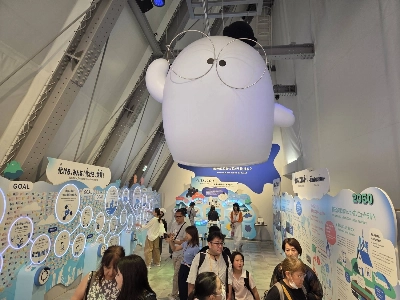Cartoons of salarymen mid-nap on the train and invented words to describe their sleeping positions; an illustrator’s must-order coffee items while going through a breakup; a photographer’s favorite playground equipment to sit on when feeling sad — anything is fair game as a subject for a “zine."
At Zine Fest, one of Japan’s fastest-growing zine fairs, a fashionable, predominantly young crowd dots the space both behind and in front of the rows of tables that stretch on and on. They turn hand-stitched pages, try to read thumb-sized miniature books or listen to a cassette tape of field recordings taken in train stations, complete with a tiny booklet. These seemingly disparate items are all sold as zines, handmade, self-published media in small circulations. They have existed in some shape for much longer, known as dōjinshi and mini comics in Japan, or fanzines in the U.S., often created by a particular fanbase. Nowadays, zines are soaring in popularity and their audience have expanded in scope, changing the zine image from niche to trendy.
“Public awareness of the word ‘zine’ is growing,” says Ko Nakanishi, 46, owner of Zine Farm, the organizer of Zine Fest. The semi-regular market event started in Tokyo’s Kichijoji neighborhood in 2021 and it has since expanded to over a dozen other locations across the country, in places such as Sapporo, Fukuoka and Osaka. The January Tokyo Zine Fest saw 500 different booths selling zines, up from 150 booths in March the previous year.

















With your current subscription plan you can comment on stories. However, before writing your first comment, please create a display name in the Profile section of your subscriber account page.